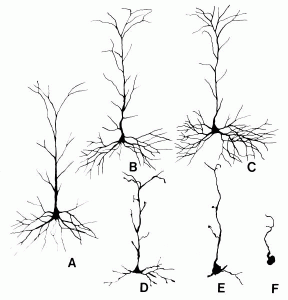Did you know that your baby’s brain has 100 billion cells called neurons and that each of these neurons is a part of a potential highway of information? The more these neurons are used, the more easily the information moves through their developing brains and the better prepared they are for dealing with the challenges of school and life.
The number of brain cells a child has at birth is determined by genetics, but the early childhood environment has a huge influence on how these neurons communicate with each other. Smooth easy communication within the highways of neurons of a child or an adult influence how well they perform in school or in their job.
How can you, as a parent, enhance the development of this network of neurons or highway system in your child’s brain? You’ve taken the first step by providing a nurturing stress-free environment where a child feels protected and safe. When a child is stressed, either physiologically or emotionally, the brain is flooded with glucocorticoids which cause a decrease in neuronal connections being made and the highway of information is full of potholes and broken sections. This leads to poor acquisition of new information, an inability to interact socially and ultimately poor performance in school. When the child is gently guided in his learning, fed nutritional foods and made to feel safe, nothing hinders his brain development.
Safety and comfort are not the only factors which you can influence. Your child’s brain is at a highly impressionable stage where stimulation of ideas and enrichment of concepts being introduced can most influence her ability to learn and function at a high level in society. At the neuronal level, using our highway analogy, she’s got all the materials and workmen available to build as many smooth easy-travelling highways she requires, and all she needs are the instructions to do so. These instructions would be in the form of brain usage. When she is at this stage, she needs mental stimulation in the form of challenges, creative situations, problem-solving situation, opportunities and requirement to communicate clearly and effectively. The more stimulation she receives at this stage, the more highways she builds. Conversely, the less stimulation, the fewer connections between the neurons and the more difficulty she has to process ideas and acquire new information. In the diagram below, you can see what stimulated neurons look like in figure A, B and C. They’re well-formed highways with many paths which connect to other highways. In D, E and F, there are neurons that have formed few paths to join to other neurons or have even broken down, like in the case of F in the diagram.

Research shows that 50% of a child’s capability to learn is established by the time the child is five and 80% by the time the child is eight. This is called a ‘window of opportunity’ during which a child will most benefit from enrichment which is defined by education.com as ‘a positive biological response to a contrasting environment, in which measurable, synergistic, and global changes have occurred within the brain.’ Each neuron in a child’s brain can potentially form up to 15,000 connections to other neurons resulting in possibly trillions of connections. Enrichment, as defined above, is most beneficial during this window of opportunity and can affect a child’s learning potential by as much as 20%. This represents an enormous increase in intellectual capacity.
Good parenting, therefore, plays an important role in your child’s ultimate success, however it is now clear that the children who grow up to be the most successful adults are the ones who are provided with rich and varied early childhood stimulation. It is now apparent that children’s brains require not only proper nutrition and emotional stability during the window of opportunity, but also multiple ways of learning, varied sources of input and proper guidance in interpersonal relationships for optimum growth and development.
References:
Diamond, Marian Cleeves. “School of Education at Johns Hopkins University-Response of the Brain to Enrichment.” Johns Hopkins School of Education – Home. New Horizons for Learning, n.d. Web. 24 Apr. 2013. http://education.jhu.edu/PD/newhorizons/Neurosciences/articles/Response%20of%20the%20Brain%20to%20Enrichment/ .
Fletcher, Janice, Associate Professor Child, Family, Consumer Studies, University of Idaho, Moscow, and Idaho. “Making Connections: Helping Children Build Their Brains | The Future in Our Hands.” The Future in Our Hands | Life lessons and inspiration of a professional mom, teacher, and friend.. N.p., 15 May 2007. Web. 26 Apr. 2013. http://thevivacious7.wordpress.com/2007/05/15/making-connections-helping-children-build-their-brains/ .
Graham, J. ” The University of Maine – Cooperative Extension Publications – Bulletin #4356, Children and Brain Development: What We Know About How Children Learn.” The University of Maine. N.p., n.d. Web. 24 Apr. 2013. http://umaine.edu/publications/4356e/ .
Jeppson, J., Myers-Walls J.A., and Love D.. “Brain Development.” Provider-Parent Partnerships. Purdue University, n.d. Web. 24 Apr. 2013. http://www.extension.purdue.edu/providerparent/child%20growth-development/braindev.htm .
The Urban Child Institute. “Baby’s Brain Begins Now: Conception to Age 3 | The Urban Child Institute.” The Urban Child Institute. N.p., n.d. Web. 23 Apr. 2013. http://www.urbanchildinstitute.org/why-0-3/baby-and-brain .
“ZERO TO THREE: FAQ’s on the Brain.” ZERO TO THREE: Homepage. National Center for Infants, Toddlers and Families, n.d. Web. 27 Apr. 2013. http://www.zerotothree.org/child-development/brain-development/faqs-on-the-brain.html .
